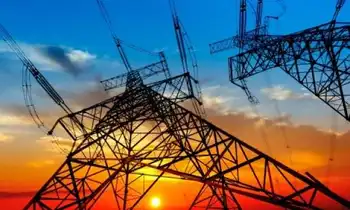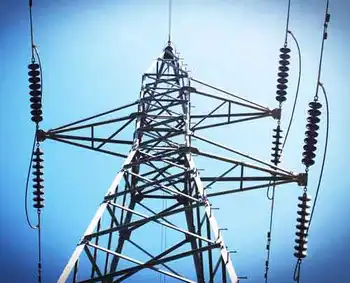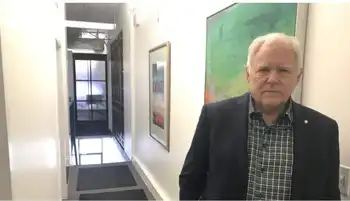Wind power is not a panacea
By Vancouver Sun
Substation Relay Protection Training
Our customized live online or in‑person group training can be delivered to your staff at your location.

- Live Online
- 12 hours Instructor-led
- Group Training Available
But what I really like is that the fuel for these sleek machines is the wind itself, so there are no emissions to pollute and warm the atmosphere. And the land below can be used for farming, golf courses and parks. Those white turbines are very green.
From 2003 to 2007, world installed wind-turbine capacity grew by an eye-popping 25 per cent each year, and growth is projected to continue at a vigorous annual rate of 20 per cent for the next five years. Today, wind power has a total capacity of 155,000 megawatts (MWs). This is a lot of turbines, for each one is rated at about 0.5 to two MW.
Even Canada is soaring on the air currents with 1,856 MWs of capacity, almost all of which (93 per cent) has been installed since 2000. The provincial leaders are Alberta (524 MW), Ontario (501 MW) and Quebec (422 MW).
One place you won't see any slowly turning blades, however, is in British Columbia, for the so-called "green" province is a wind laggard. Pity, for B.C. desperately needs clean electrical power. Since 2001, B.C. has not generated enough electricity to meet demand, and has imported electricity from Alberta and Washington, much of it from dirty coal stations. The shortfall is 15 per cent and growing.
Before looking at B.C.'s situation, I need to digress and release a little air from the wind balloon. Yes, wind power is great and I fully support its vigorous growth, but we should not set our hopes too high. Environmental groups are doing a dangerous disservice by claiming wind (along with solar and conservation) will provide limitless clean energy and will power the hydrogen economy of the future. It is the answer to global warming and the world's energy problems, so they state. This is totally wrong, instills false optimism and diverts us from tackling the real problems: the ever-growing population and economy.
Wind, sadly, can deliver only a small fraction of the gargantuan amounts of energy that we humans crave. Here's why.
First, it is not generally recognized that the capacity of wind farms is, in practice, much smaller than quoted. Because winds don't blow all the time, a 200-MW wind farm, for example, only generates about one-third of the electricity as a 200-MW hydro or fossil-fuel plant, which runs virtually full-time.
Another serious complication: Electricity must still be supplied to consumers when the wind stops. Thus, wind farms require a backup energy source in the form of a hydro or fossil-fuel plant, or its energy must be stored in batteries or by making hydrogen. Either way, big bucks are needed for capital investment.
Because wind is diffuse, wind farms are large. For example, to replace a 1,000-MW coal station would require about 1,500 turbines of the latest design (two MW each). Not surprisingly, the NIMBY (Not In My Back Yard) syndrome is proving to be a major obstacle to such enormous facilities.
Clearly, wind power is good but it's not a cure-all for our energy ills.
So, what's happening in B.C.? Although the province is endowed with good wind-power potential, progress has been snail-like. The government has decided that private interests will build - and own - all of B.C.'s future wind farms, but the process is controlled by BC Hydro, which will purchase the power. BC Hydro has not promoted wind power, perhaps because wind costs more than imported electricity. Instead, Hydro insists that wind must bid competitively with other "clean" sources such as run-of-river hydro and biomass.
Recent provincial policies may change this position. B.C.'s Energy Plan of 2007 stipulates at least 90 per cent of all electricity generated in the province must come from clean or renewable sources. The recently announced carbon tax will also help wind power's financial outlook.
Now the good news. BC Hydro has approved three projects to date. The Dokie Wind Energy project is a 180-MW wind farm in the Peace region, planned and owned by Earth First Energy Inc. of Victoria. Its first electricity will enter the grid later this year and the entire project - one of the largest in Canada - will be completed by end of 2009. Also coming on line in the next few years is the Bear Mountain Partnership 120-MW farm near Dawson Creek and the Mount Hays Wind Project (27 MW) just south of Prince Rupert.
Once BC Hydro loosens its bureaucratic grip, wind power could expand quickly, for there is no shortage of wind and wind entrepreneurs in B.C. For example, more than 50 companies hold investigative wind-use permits. An ambitious project currently on the drawing table is by NaiKun Wind Development Inc., which is planning a mammoth wind farm to be situated in the ocean east of Haida Gwaii. A total of 1,750 MW would be built in five phases. The first phase of 320 MW could start in 2010, BC Hydro willing.
Hydro needs to give wind power priority, recognizing that the alternative - purchased power - bears a large hidden environmental penalty. Instead of forcing wind to go through a competitive process, it should offer to purchase unlimited quantities at prescribed prices, as is done in other jurisdictions.
Electricity is the lifeblood of this growing province. We need more, and it needs to be green.











